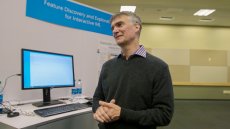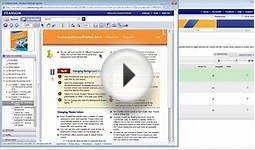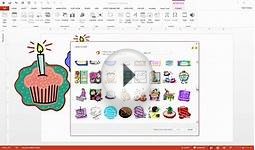Learning Microsoft
Microsoft researchers are at the forefront of efforts to help people without a machine learning background teach their systems to get better based on experience.
They’re calling this new evolution machine teaching.
“No one has really built a machine learning tool for the layman, ” said Patrice Simard, a distinguished engineer with Microsoft Research who is leading a new machine teaching research project at Microsoft Research.
Machine learning has proved so useful that it’s created a supply and demand problem: There just aren’t enough people with machine learning expertise to do all the projects businesses and organizations want. That’s prompted more efforts to make machine learning available to a broader group of people.
With Azure ML, other developers without a machine learning background can then use those models to add deep machine learning capabilities, instead of always having to rely on a data scientist or machine learning expert. That saves time and money.

Microsoft Research’s machine teaching project builds on that effort by creating tools that would allow anyone to teach a computer how to do machine learning tasks, even if that person has no expertise in data analysis or computer science.
Eventually, Simard hopes that a subject matter expert –such as a doctor, an information worker or a chef – could use these machine teaching tools to train models capable of doing tasks on their behalf.
For example, the machine teaching tools could be used to sift through large amounts of data to find medical records, emails or a recipe that meets very specific criteria. The tools also could be used for automatically filing, sounding an alarm or taking action when certain conditions are met.
For some machine learning researchers, this new approach represents a major shift, Simard said. Until now, many machine learning researchers have focused on how they can build better, faster and more precise algorithms. Simard believes far larger gains can be made by increasing the number of people who can create, teach and maintain these models.
To do that, Simard said researchers instead need to think about creating tools that are more autonomous, and that include a simple, understandable user interface.
An early version of the group’s machine teaching technology is already being used in Language Understanding Intelligent Service an invite-only beta that enables applications to easily understand what users mean when they say or type something using natural, everyday language.
Dubbed LUIS, it’s part of Project Oxford, a set of technologies that allows developers to create smarter apps that can do things like recognize faces and interpret natural language even if the app developers are not experts in those fields.
As machine learning becomes more widespread, Simard expects more applications like that. He said it’s just impractical to assume that every company who wants to personalize an exercise app or build a self-help system for their customers will be able to hire a machine learning expert.
You might also like





|
The Learning Journey Match It! Mathematics Toy (Total Toys)
|






 Windows Cloud is the internal name for an upcoming operating system by Microsoft. It will be announced with its official name at Microsoft's Professional Developers Conference on October 27, 2008 by Steve Ballmer.
Windows Cloud is the internal name for an upcoming operating system by Microsoft. It will be announced with its official name at Microsoft's Professional Developers Conference on October 27, 2008 by Steve Ballmer.